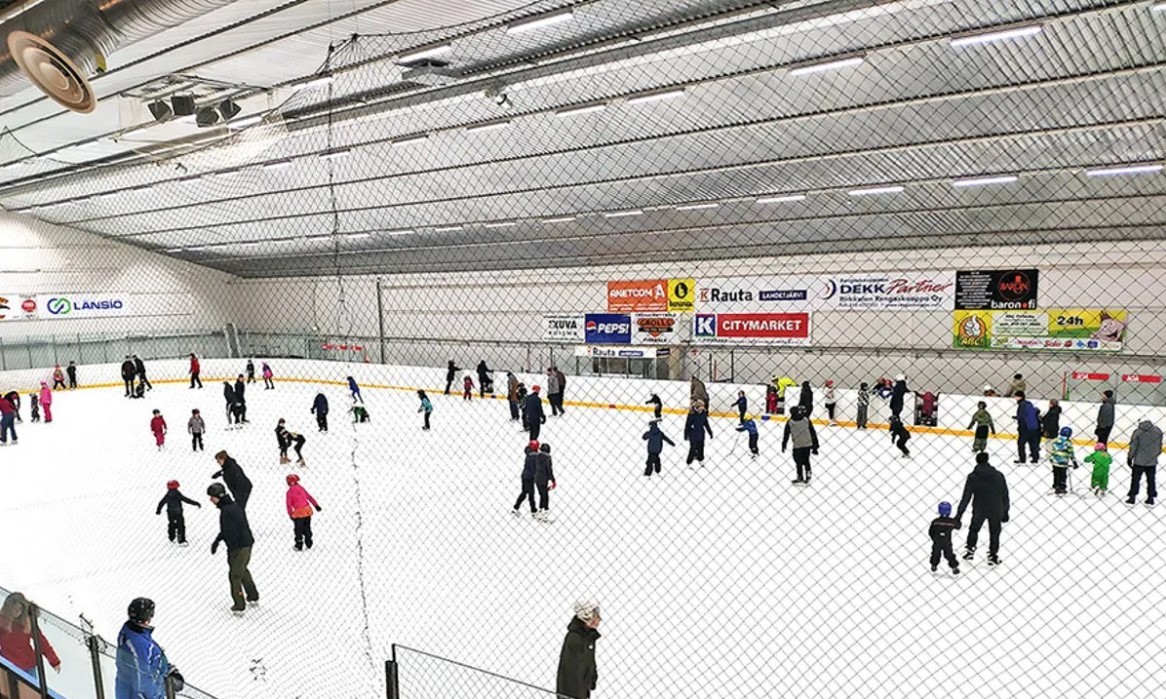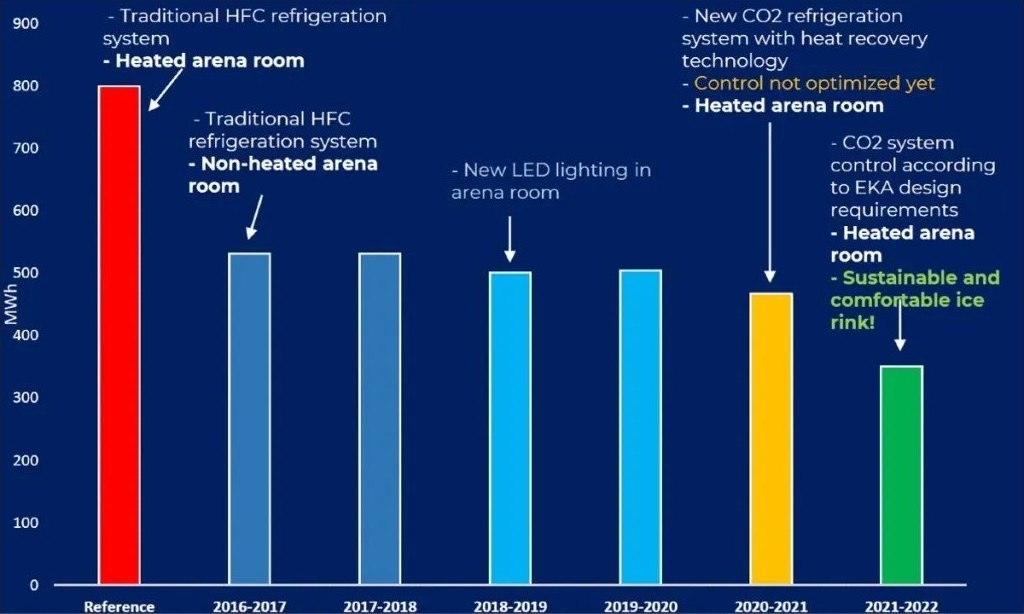CO2 refrigeration helps cut electricity use at finnish ice rink by 34%
June 01, 2023

According to the latest data from consultancy firm EKA Finland, a CO2 (R744) rack with two-stage heat recovery has helped to reduce the electricity demand at an ice rink in Pirkkala, Finland, by 34% compared to its previous R404-based refrigeration system.
During the eight months of the 2022 ice-skating season – which runs from August to March – the ice rink used only 330MWh of electricity. Before the CO2 refrigeration system was installed in 2020, the facility required around 500MWh per season.
Operating on less than 1.4MWh of electricity per day, the Pirkkala ice rink is now one of the most efficient ice rinks in the world, said EKA. In comparison, the average Finnish ice rink uses more than 3MWh of electricity per day, the company added.
Along with providing cooling for the ice rink, the CO2 system also meets all of the arena’s space heating and hot water demand via heat recovery. Previously, in an effort to minimize energy consumption, the municipality kept the arena unheated, creating an uncomfortable environment for users.
“This success story can encourage other ice rink owners to follow Pirkkala’s model to achieve similar results,” said EKA. “Sustainable energy solutions bring both economic and environmental benefits and make ice rinks more pleasant for their users. Efficient and environmentally friendly solutions are the direction of the future and offer significant benefits to both private and public operators.”
Previous data suggested that the CO2 rack reduced energy consumption by 30%.
Optimizing operations
Additional energy savings were achieved through the optimization of the ice rink’s operation prior to the 2022 season.
More than 3MWh of electricity has been saved each month by reducing the load on the cooling system at night when the arena is not in use. This has been achieved by raising the temperature of the ice surface and lowering the air temperature in the arena space, explained EKA Finland.
Different set values have also been applied for practices and matches.
 EKA Finland has helped the Pirkkala ice rink reduce its electricity consumption by 34%. (Source: EKA Finland)
EKA Finland has helped the Pirkkala ice rink reduce its electricity consumption by 34%. (Source: EKA Finland)
Additional savings could be achieved with the installation of solar panels and the better utilization of surplus heat, for example by heat export, said EKA Finland.
According to the company’s Quick Ice Arena Energy Savings guide, which it produced for the International Ice Hockey Federation (IIHF), an ice rink in Eksjö, Sweden, saw its electricity consumption reduced by 58% with the installation of a CO2-based system. Similar results were also achieved at an ice rink in Gimo, Sweden, which installed its CO2 system in 2014. Around 10% of ice rinks in Sweden use CO2. The percentage is much lower in North America.
Other examples of using natural refrigerants in ice rink refrigeration systems can be found in the North American Guide to Natural Refrigerants in Ice Arenas, which was produced by ATMOsphere, publisher of R744.com.


